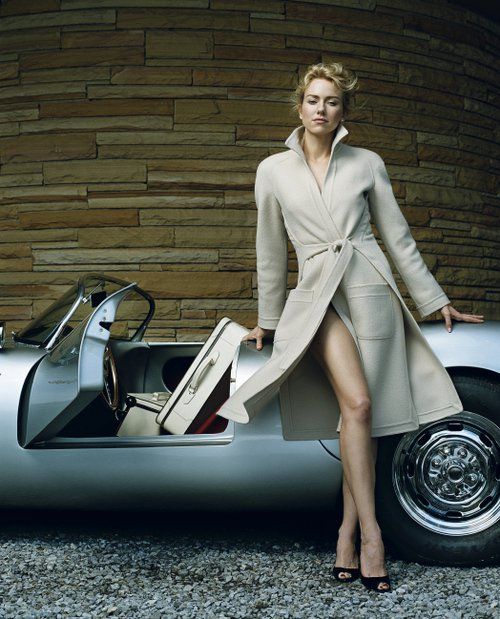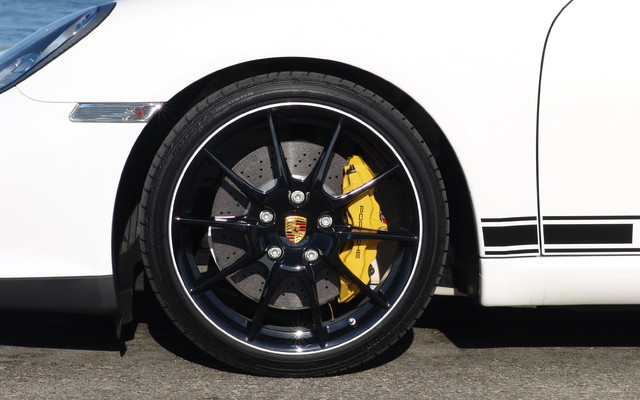I don't argue, I like people to back up their claims and not say they don't agree. As I said it has nothing to do with how one drives /-pORIGINAL: Andy FaganThat's not right either. I would say it was more to do with the severity of the turn and direction change than car speed alone. However I'm not up for arguing about it so lets just drive our own ways [the higher the speed the quicker they snap once traction has gone.]
You are using an out of date browser. It may not display this or other websites correctly.
You should upgrade or use an alternative browser.
You should upgrade or use an alternative browser.
Are Spyders Becoming Extinct At OPCs!
- Thread starter daro911
- Start date
The same answer as before. But i'll bow out too and await John's pic[ORIGINAL: MrDemon the higher the speed the quicker they snap once traction has gone.
ORIGINAL: flat6 Some of what has been said goes against the laws of physics. Mid-engined is the optimum platform for balance. Balance makes the car more controllable and predictable on the limit and even beyond the limit. Some videos backing up what I had thought from my own limited experience of driving and a few tests of a 911 back to back with 987 at PEC etc, where you feel the weight transfer under braking and cornering more in a 911. That lead me to feel the mid-engined weight distribution is better balanced, notwithstanding that rear-engined has some advantages. http://www.youtube.com/watch?v=wT2wkhg6LTQ Great slow-mo at the start and end showing the balance after breaking traction. http://www.youtube.com/watch?v=1Wk28sxMcyc An article that backs up what I had understood. http://www.drivingfast.net/track/engine-driveline.htm#.UbyI3-fQp4M On paper, a rear engine car is a potentially unstable design. The heavy end generates much more momentum than the light front end and is more difficult to slow down and change direction. Rear engine cars can be prone to oversteer when lifting off the throttle or braking during a corner. Even when braking with locked wheels in a straight line you can find the back of the vehicle has a tendency to come round. Rear engine cars must be treated with respect - when oversteer is invoked it can be very difficult to control. Having said that, some of the best track cars of all time have been produced by Porsche and clever car setup and tuning can allow rear wheel drive to produce astonishing results. The front wheels are free to use all available grip for steering, and the weight transfers under acceleration provide plenty of traction at the back. The main advantage of mid engine cars is that they have a low 'moment of inertia'. This means when cornering it is easier to turn the car to a new direction, thus increasing the manoeuvrability and stability. In addition, less rotational momentum is generated, which can lead to oversteer. Most sports car manufacturers aim for a 50:50 weight distribution to provide neutral handling characteristics, and with mid engine cars it is much easier to achieve this. Even though some front engine rear wheel drive cars may have a 50:50 weight distribution, they will have a higher 'moment of inertia' due to the majority of the weight being at the extremities. An additional benefit of the mid engine layout is that the mass of the engine is more equally split between all four wheels which leads to naturally neutral handling characteristics. What Porsche have achieved with the 911 almost rewrites physics but as they reach the limit, the 991 has been given a longer wheelbase so that the engine sits a little further forward relative to the rear axel. Why? To reduce the polar moment of inertia.
Well I have been looking around and found this one - new page new spyder and woman - for those of a nervous disposition - Look away now[ORIGINAL: flat6 Only if you've found a better one John[]

I did give my reasons! And so did Flat6 with extreme technical explanations. I was waiting for you to back up your claim! Unless you want to supply a 911 and a Boxster on track we'll have to just disagreeORIGINAL: MrDemonI don't argue, I like people to back up their claims and not say they don't agree. As I said it has nothing to do with how one drives /-pORIGINAL: Andy FaganThat's not right either. I would say it was more to do with the severity of the turn and direction change than car speed alone. However I'm not up for arguing about it so lets just drive our own ways [the higher the speed the quicker they snap once traction has gone.]
A stable car is hard to get out of control, and there after harder to control over the limit. your post shows these cars are prone to over steer, a mid engine car is not. So if your mid engine car is more stable, you are now going faster mid corner. See those 4 things which I might add are only a CD patch area keeping you on the road, ie tyres  When grip has been exceeded you will be going far faster than either a rear engine car or a front engine car. And now you car will pivot round your engine. Hence the term " snap over steer" because as you posted the car has lower rotational inertia so will spin fast. I am not sure why you guys are not getting it lol It's basic car dynamics.
When grip has been exceeded you will be going far faster than either a rear engine car or a front engine car. And now you car will pivot round your engine. Hence the term " snap over steer" because as you posted the car has lower rotational inertia so will spin fast. I am not sure why you guys are not getting it lol It's basic car dynamics.
This is my last reply to this topic. (I divorced my wife for similar reasons) All I will say is, ask yourself a question: Why does a pendulum have the weight at the bottom?ORIGINAL: MrDemon A stable car is hard to get out of control, and there after harder to control over the limit. your post shows these cars are prone to over steer, a mid engine car is not. So if your mid engine car is more stable, you are now going faster mid corner. See those 4 things which I might add are only a CD patch area keeping you on the road, ie tyresWhen grip has been exceeded you will be going far faster than either a rear engine car or a front engine car. And now you car will pivot round your engine. Hence the term " snap over steer" because as you posted the car has lower rotational inertia so will spin fast. I am not sure why you guys are not getting it lol It's basic car dynamics.
Shirley's got one! http://www2.autotrader.co.uk/classified/advert/201306157310830/sort/default/usedcars/maximum-age/up_to_3_years_old/engine-size-cars/3l_to_3-9l/price-from/25000/model/boxster/make/porsche/onesearchad/used/onesearchad/nearlynew/onesearchad/new/page/1/radius/1501/postcode/cb45bx/keywords/spyder/saved-search-id/2c92962d3a4eee4e013a5d9f81340012?logcode=p
The main advantage of mid engine cars is that they have a low 'moment of inertia'. This means when cornering it is easier to turn the car to a new direction, thus increasing the manoeuvrability and stability. In addition, less rotational momentum is generated, [whereas high rotational momentum, such as in a car with weight at one end] 'comma' can lead to oversteer. I.e. a mid-engined car is not susceptible to oversteer than a pendulum car.ORIGINAL: MrDemon A stable car is hard to get out of control, and there after harder to control over the limit. your post shows these cars are prone to over steer, a mid engine car is not.
Great!ORIGINAL: MrDemon So if your mid engine car is more stable, you are now going faster mid corner.
Great!ORIGINAL: MrDemon See those 4 things which I might add are only a CD patch area keeping you on the road, ie tyresWhen grip has been exceeded you will be going far faster than either a rear engine car or a front engine car.
No, because An additional benefit of the mid engine layout is that the mass of the engine is more equally split between all four wheels which leads to naturally neutral handling characteristics. Yes mid-engine helps the car turn in better but that doesn't mean you are spinning the car when your turning. It therefore doesn't mean that when you break traction you will inevitably end up in an oversteer spin. Maybe the change to your geo is causing that tendency whilst giving you better turn in. the mass of the mid-engine is more equally split between all four wheels When you see Harris break traction in the slow-mo's he finds it very easy to break the traction of the front and rear wheels simultaneously and balance the car with some opposite lock. When a 911 breaks traction, the way it breaks traction is more influenced by the weight being at one end. Without going into all the different variations, if traction is broken at the rear with grip maintained at the front, (either on the gas or under braking) with a 911 you have a pendulum. In the same scenario, in a mid-engined car the distance of the mass from the gripping front wheels is less so you have less of a pendulum swing - less swing effect - less of an instability to correct. I think I am bowing out this time.ORIGINAL: MrDemon And now you car will pivot round your engine.
Much better[ORIGINAL: jdpef356Well I have been looking around and found this one - new page new spyder and woman - for those of a nervous disposition - Look away now[ORIGINAL: flat6 Only if you've found a better one John[]
]


John H
New member
Brian ... Given your advanced years and general air of senility, buying something like that would be stupid, irresponsible and downright daft. So ... I wholly approve [ORIGINAL: kitchens http://www.pistonheads.com/classifieds/used-cars/kit-cars/speedster-replicas/porsche-550-spyder-replica/1440688 Since selling my 356 Speedster in some ways have regretted it ....i now fancy this 550 ??
I am most grateful to flat6 and andy for their technical expertise ,in explaining the reasons for what I know happens based purely on driving various examples extensively over nearly 30 years(albeit not racing standard most of that time )ORIGINAL: flat6The same answer as before. But i'll bow out too and await John's pic[ORIGINAL: MrDemon the higher the speed the quicker they snap once traction has gone.]
ORIGINAL: flat6 Some of what has been said goes against the laws of physics. Mid-engined is the optimum platform for balance. Balance makes the car more controllable and predictable on the limit and even beyond the limit. Some videos backing up what I had thought from my own limited experience of driving and a few tests of a 911 back to back with 987 at PEC etc, where you feel the weight transfer under braking and cornering more in a 911. That lead me to feel the mid-engined weight distribution is better balanced, notwithstanding that rear-engined has some advantages. http://www.youtube.com/watch?v=wT2wkhg6LTQ Great slow-mo at the start and end showing the balance after breaking traction. http://www.youtube.com/watch?v=1Wk28sxMcyc An article that backs up what I had understood. http://www.drivingfast.net/track/engine-driveline.htm#.UbyI3-fQp4M On paper, a rear engine car is a potentially unstable design. The heavy end generates much more momentum than the light front end and is more difficult to slow down and change direction. Rear engine cars can be prone to oversteer when lifting off the throttle or braking during a corner. Even when braking with locked wheels in a straight line you can find the back of the vehicle has a tendency to come round. Rear engine cars must be treated with respect - when oversteer is invoked it can be very difficult to control. Having said that, some of the best track cars of all time have been produced by Porsche and clever car setup and tuning can allow rear wheel drive to produce astonishing results. The front wheels are free to use all available grip for steering, and the weight transfers under acceleration provide plenty of traction at the back. The main advantage of mid engine cars is that they have a low 'moment of inertia'. This means when cornering it is easier to turn the car to a new direction, thus increasing the manoeuvrability and stability. In addition, less rotational momentum is generated, which can lead to oversteer. Most sports car manufacturers aim for a 50:50 weight distribution to provide neutral handling characteristics, and with mid engine cars it is much easier to achieve this. Even though some front engine rear wheel drive cars may have a 50:50 weight distribution, they will have a higher 'moment of inertia' due to the majority of the weight being at the extremities. An additional benefit of the mid engine layout is that the mass of the engine is more equally split between all four wheels which leads to naturally neutral handling characteristics. What Porsche have achieved with the 911 almost rewrites physics but as they reach the limit, the 991 has been given a longer wheelbase so that the engine sits a little further forward relative to the rear axel. Why? To reduce the polar moment of inertia.
Now she looks like the weekend away would be worth it!! I expect she just has perfume and make up in the casesORIGINAL: flat6Much better[ORIGINAL: jdpef356Well I have been looking around and found this one - new page new spyder and woman - for those of a nervous disposition - Look away now[ORIGINAL: flat6 Only if you've found a better one John[]
]

] You could be starting a new theme[
]

Just back from Bruce Springsteen at Wembley tonight and must say in between some very interesting debating you Spydermen have been busy boys[ORIGINAL: flat6
Difficult choice!!! [ORIGINAL: flat6We need your imagination on this one now Andy[
]
Jealous of you going to Springsteen concert, was it what you expected??
[ORIGINAL: Andy Fagan Difficult choice!!! [] But I think the car would work out cheaper in the long run [
]


Posts made and opinions expressed are those of the individual forum members
Use of the Forum is subject to the Terms and Conditions
Disclaimer
The opinions expressed on this site are not necessarily those of the Club, who shall have no liability in respect of them or the accuracy of the content. The Club assumes no responsibility for any effects arising from errors or omissions.
Porsche Club Great Britain gives no warranties, guarantees or assurances and makes no representations or recommendations regarding any goods or services advertised on this site. It is the responsibility of visitors to satisfy themselves that goods and/or services supplied by any advertiser are bona fide and in no instance can the Porsche Club Great Britain be held responsible.
When responding to advertisements please ensure that you satisfy yourself of any applicable call charges on numbers not prefixed by usual "landline" STD Codes. Information can be obtained from the operator or the white pages. Before giving out ANY information regarding cars, or any other items for sale, please satisfy yourself that any potential purchaser is bona fide.
Directors of the Board of Porsche Club GB, Club Office Staff, Register Secretaries and Regional Organisers are often requested by Club members to provide information on matters connected with their cars and other matters referred to in the Club Rules. Such information, advice and assistance provided by such persons is given in good faith and is based on the personal experience and knowledge of the individual concerned.
Neither Porsche Club GB, nor any of the aforementioned, shall be under any liability in respect of any such information, advice or assistance given to members. Members are advised to consult qualified specialists for information, advice and assistance on matters connected with their cars at all times.









